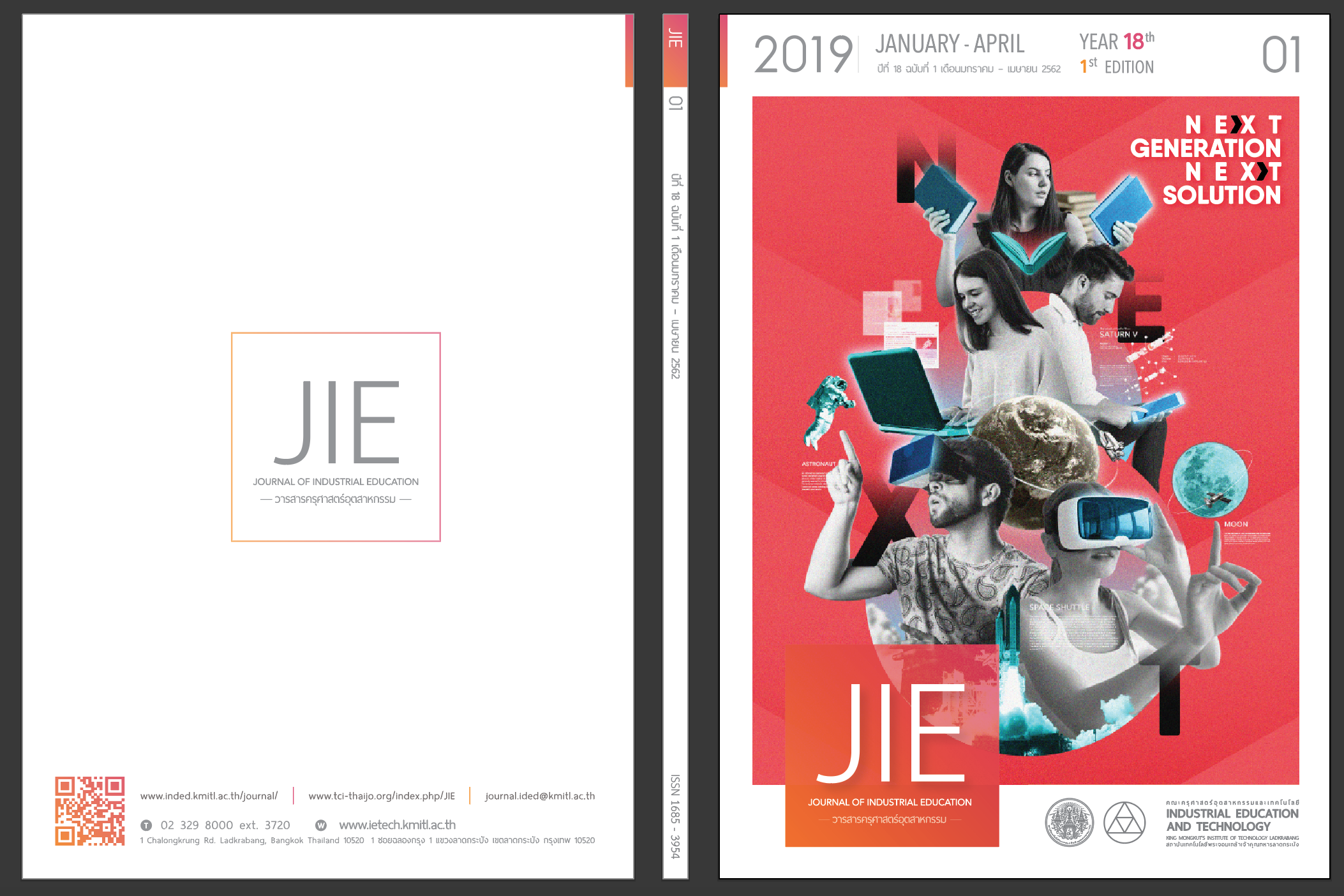A SYSTEMATIC REVIEW OF ENGINEERING DESIGN PROCESS ON CREATIVE PROBLEM SOLVING ABILITIES OF UPPER SECONDARY SCHOOL STUDENTS
Keywords:
Engineering design process, Creative problem solving abilities, Science process, Constructivism, Problem- based learningAbstract
This study was used systematic review approach to synthesize instructional models of the engineering design process affecting creative problem-solving abilities of secondary school students and the research question were to study the process of engineering design process to inquire for integrating engineering design process. The sample used in this study was 20 research projects on instructional models of the engineering design process conducted with secondary school students in other countries within the past five years (2013-2018). For data collection, the research instrument was a synthesis form developed based on the literature review. As a result, it was found that instructional models of the engineering design process affecting creative problem-solving abilities of secondary school students included the following steps: 1) problem identification, 2) information collection, 3) planning, 4) design, 5) operation, 6) testing, 7) improvement/evaluation, and 8) presentation. In addition, the engineering process could be integrated with other instructional models, including the science process, constructivism and problem-based learning. The results of this research can be used as guidelines for planning instructional activities using the engineering design process affecting creative problem-solving abilities and they can help personnel and teachers/instructors prepare or develop their instruction using the engineering design process.
References
Ministry of Education. 2017. Core Curriculum Basic Education of Mathematics, Science and Geography Content in the Subjects of Social Studies, Religion and Culture (Updated edition 2017). Bangkok: Office Academic and Education Standards.
Chan, J. and C. Schunn. 2015. The impact of analogies on creative concept generation: Lessons from an in vivo study in engineering design. Cognitive Science, 39(1), p. 126-155.
Ragupathi, K.k.n.e.s. and H.h.h.u.c. Hubball. 2015. Scholarly Approaches to Learning Technology Integration in a Research-Intensive University Context: Impact of a New Faculty Initiative. Transformative Dialogues. Teaching & Learning Journal, 8(1), p. 1-16.
Bybee, R. 2010. Advancing STEM education: A 2020 vision. Technology and Engineering Teacher Journal, 70.
Thipakorn, B. and K.S. Tawornpichayachai. 2015. The Twenty-First Century Engineering Education: KMUTT Imagineering Program. Technology & Workplace Skills for the Twenty-First Century, p.71.
Saeedeh Ziaeefard, et al. 2017. Co-robotics hands-on ativities: A gateway to engineering design and STEM learning. Robotics and Autonomous Systems, 7(13).
El-Zein, A.H. and C. Hedemann. 2016. Beyond problem solving: Engineering and the public good in the 21st century. Journal of Cleaner Production, 137, p. 692-700.
Zhu, W., et al. 2018. Engineering Design and Manufacturing Education through Research Experience for High School Teachers. Procedia Manufacturing, 26, p. 1340-1348.
Esmaeilian, B., et al. 2018. Use of Citizen Science to Improve Student Experience in Engineering Design, Manufacturing and Sustainability Education. Procedia Manufacturing, 26, p. 1361-1368.
Moore, T., et al. 2014. Implementation and integration of engineering in K-12 STEM education, in Engineering in Pre-College Settings. Synthesizing Research, p. 48.
Mentzer, N., K. Becker, and M. Sutton. 2015. Engineering Design Thinking: High School Students' Performance and Knowledge, p. 417-432.
SÜRmelİ, H., et al. 2018. Secondary School Students' Performance and Opinions Towards Activities Based on Engineering Design Process, 47(2), p. 844-872.
Kuang-Chao, Y.U., L.I.N. Kuen-Yi, and F.A.N. Szu-Chun. 2013. How High School Students Apply Knowledge in Engineering Design Projects. International Journal of Engineering Education, 29(6), p. 1604.
Lammi, M.m.n.e. and K.k.b.u.e. Becker. 2013. Engineering Design Thinking. Journal of Technology Education, 24(2), p. 55-77.
Cross, J., et al. 2016. Engineering and Computational Thinking talent in middle school students: A framework for defining and recognizing student affinities. in 2016 IEEE Frontiers in Education Conference (FIE).
Kelley, T.R. and J.G. Knowles. 2016. A conceptual framework for integrated STEM education. International Journal of STEM Education, 3(1), p. 11.
Mentzer, N.j.e.n.p.e.. 2014. High School Student Information Access and Engineering Design Performance. Journal of Pre-College Engineering Education Research, 4(1), p. 31-42.
Cropley, D.H. 2016. Creativity in Engineering, in Multidisciplinary Contributions to the Science of Creative Thinking, G.E. Corazza and S. Agnoli, Editors. Springer Singapore: Singapore, p. 155-173.
Chien, Y.-H. and P.-Y. Chu. 2018. The Different Learning Outcomes of High School and College Students on a 3D-Printing STEAM Engineering Design Curriculum. International Journal of Science and Mathematics Education, 16(6), p. 1047-1064.
Denson, C.D.c.n.e. and M.m.n.e. Lammi. 2014. Building a Framework for Engineering Design Experiences in High School. Journal of Technology Education, 26(1), p. 75-87.
Wendell, K.B., C.G. Wright, and P.C. Paugh. 2015. Urban elementary school students' reflective decision-making during formal engineering learning experiences (Fundamental). Proceedings of the ASEE Annual Conference & Exposition, p. 1.
Lawanto, O., et al.. 2013. Pattern of Task Interpretation and Self-Regulated Learning Strategies of High School Students and College Freshmen during an Engineering Design Project. Journal of STEM Education: Innovations & Research, 14(4), p. 15-27.
Kanematsu, H. and D.M. Barry. 2016. STEM and Creativity, in STEM and ICT Education in Intelligent Environments, p. 15-23.
Starkey, E., C.A. Toh, and S.R. Miller. 2016. Abandoning creativity: The evolution of creative ideas in engineering design course projects. Design Studies, 47, p. 47-72.
Yoon Yoon, S.s.t.e., M.G.e.p.e. Evans, and J.j.t.e. Strobel. 2014. Validation of the Teaching Engineering Self-Efficacy Scale for K-12 Teachers: A Structural Equation Modeling Approach. Journal of Engineering Education, 103(3), p. 463-485.
Downloads
Published
How to Cite
Issue
Section
License
"The opinions and contents including the words in papers are responsibility by the authors."
"ข้อคิดเห็น เนื้อหา รวมทั้งการใช้ภาษาในบทความถือเป็นความรับผิดชอบของผู้เขียน"



